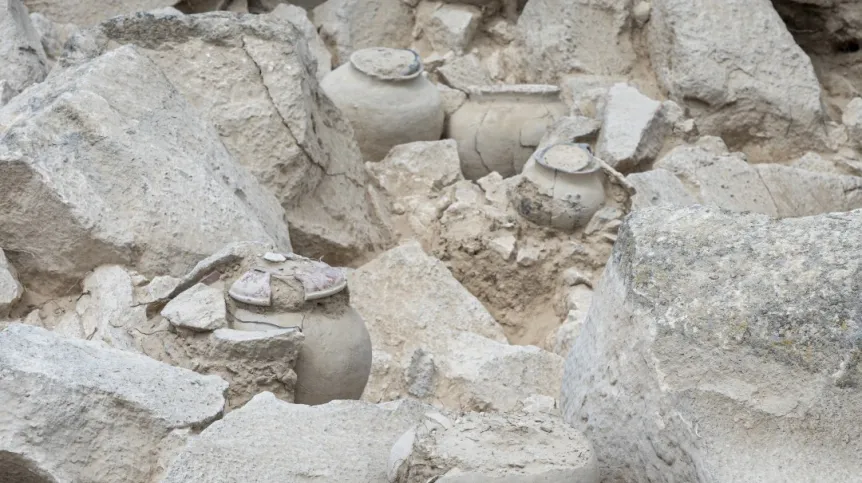
An Armenian-Polish archaeological expedition working at the Argishtikhinili site in Armenia has discovered a stone slab carved with human facial features, described by researchers as a “stone idol,” and a vast urn cemetery containing twelve burials.
Argishtikhinili, founded in 774 BCE, was one of the main administrative and economic centers of the Kingdom of Urartu in the South Caucasus during the 8th and 7th centuries BCE.
The expedition, which has just completed its second season, conducted excavations on St. David’s Hill (Surb Davti Blur)—one of the two hills where the remains of the ancient city are located.
The work is led by Dr. Mateusz Iskra from the Polish Centre of Mediterranean Archaeology of the University of Warsaw (PCMA UW) and Hasmik Simonyan from the Institute of Archaeology and Ethnography of the National Academy of Sciences of Armenia and the Service for the Protection of Historical Environment and Cultural Museum-Reservations of the Republic of Armenia.
Last season, the team explored large terraced houses with ground-floor areas reaching around 400 square meters, preliminarily dated to the late 7th–6th century BCE, the PCMA UW reported.
“Their state of preservation turned out to be surprisingly good. In many places, floors paved with mud-brick and stone paving have survived intact,” said Iskra, who is also head of the Department of Near Eastern Studies at the Polish Centre of Mediterranean Archaeology UW.
According to Iskra, these well-preserved remains offer new insights into the daily life of the city’s ancient inhabitants. In one of the houses, the researchers found a storeroom with large storage vessels still embedded in the floor. The most remarkable discovery, however, came from an adjacent room.
“Leaning against the side of a stone box, we found – to our surprise – a stone with carved human features. It was a figurine-idol, preserved in its original position,” Iskra described.
The figurine, approximately half a meter tall, was carved from volcanic tuff. It depicts a schematic face with defined eyebrows, closely set eyes, a long nose, and narrow lips. Similar idols have been found at other sites in Armenia and are believed to be linked to ancestor or fertility cults.
To better understand the idol’s function, the team plans chemical analyses of the contents of the stone chest, hoping it may contain further clues.
The second major discovery this season was a large urn cemetery containing twelve cremation burials.
“The ashes of the deceased had been carefully placed in ceramic vessels, often accompanied by grave goods,” explained Simonyan, who specializes in bioarchaeology.
She noted that the find is unprecedented in Armenian archaeology.
“This find marks a milestone in Armenian archaeology, as it most likely is the largest and best-preserved urn-field cemetery in Armenia discovered so far,” she said.
The exceptional preservation of the urns offers researchers new opportunities to study funerary customs, rituals, and social structures of the communities that lived under Urartian influence during the first millennium BCE.
The next season of excavations at Argishtikhinili is scheduled for spring 2026, marking the beginning of a new research project supported by a Polish National Science Centre grant. (PAP)
PAP - Science in Poland
ekr/ bar/ kap/
tr. RL
Gallery (8 images)
-
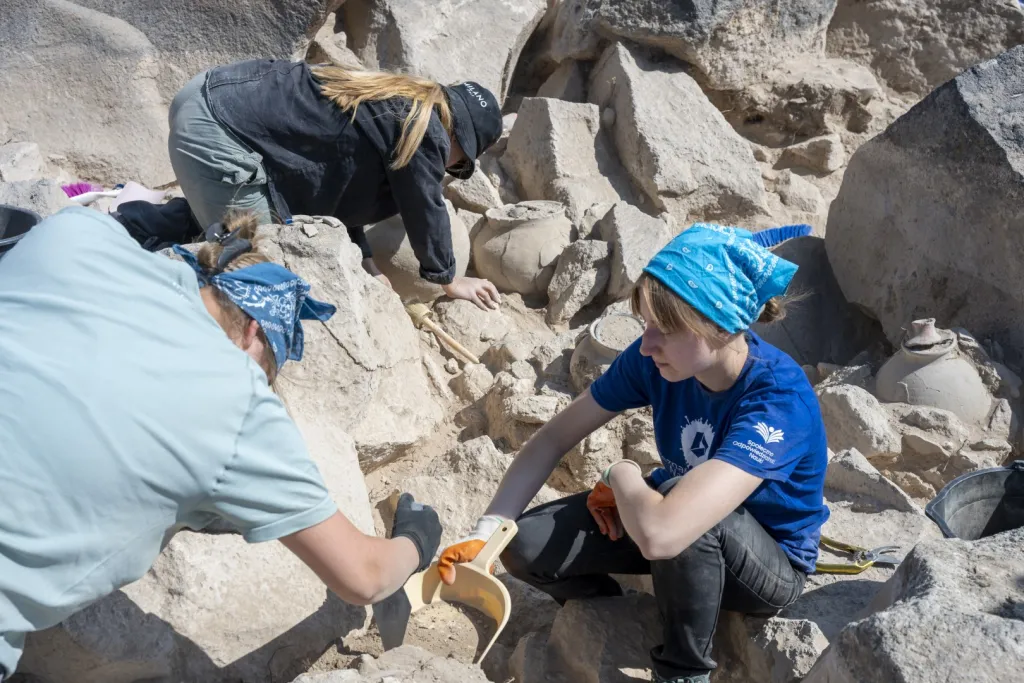 1/8Exploration of the urn cemetery. (Credit: Adrian Chlebowski/PCMA UW)
1/8Exploration of the urn cemetery. (Credit: Adrian Chlebowski/PCMA UW) -
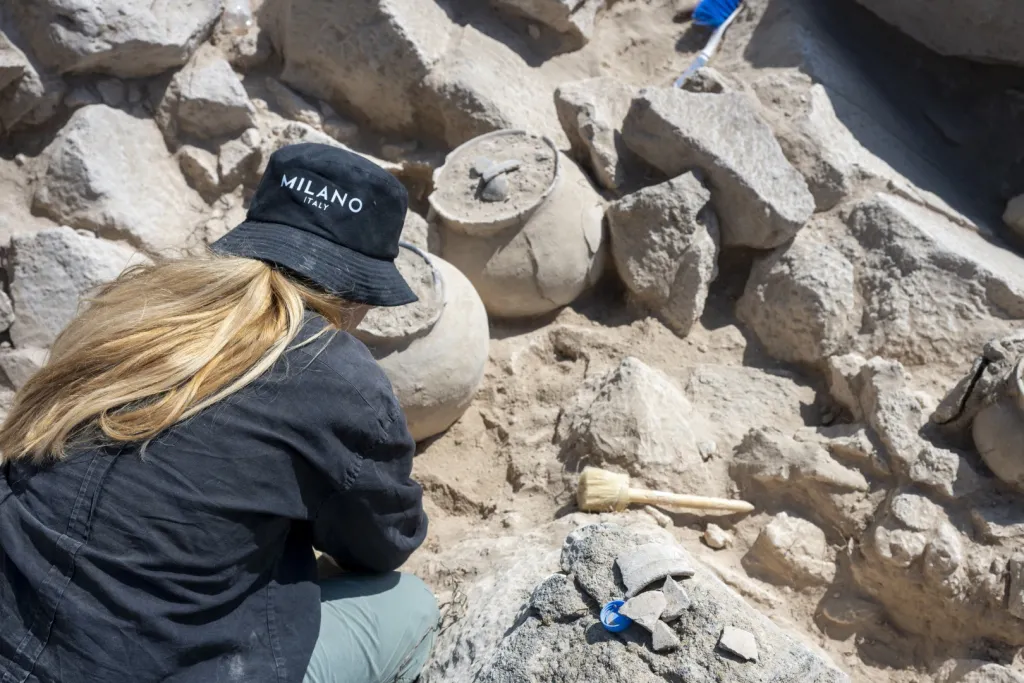 2/8Exploration of the urn cemetery. (Credit: Adrian Chlebowski/PCMA UW)
2/8Exploration of the urn cemetery. (Credit: Adrian Chlebowski/PCMA UW) -
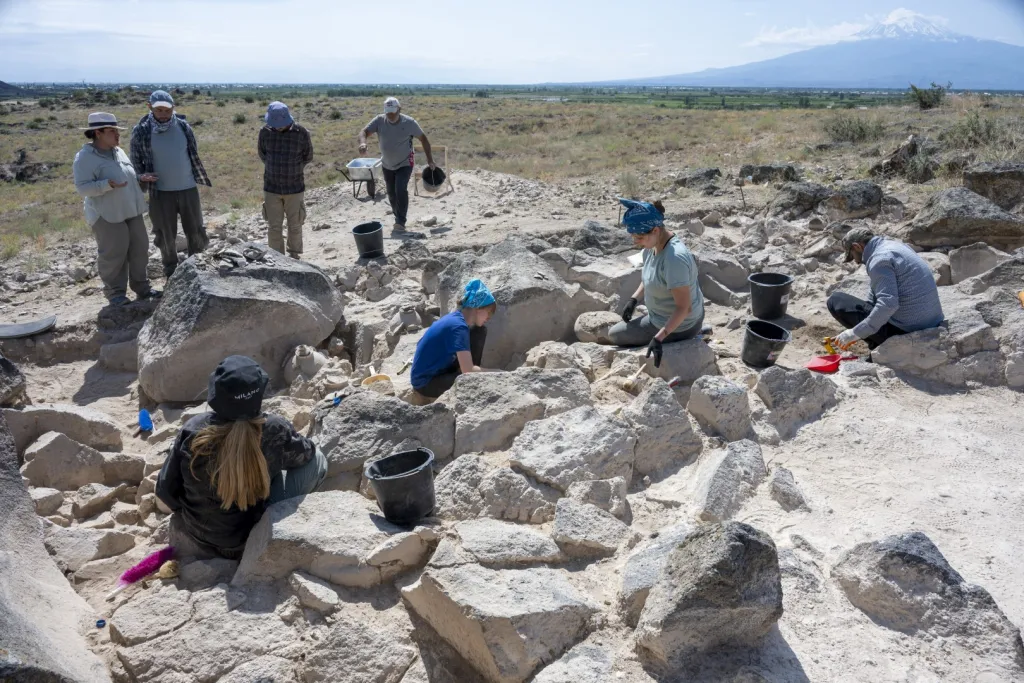 3/8Exploration of the urn cemetery. Mount Ararat in the background (Credit: Adrian Chlebowski/PCMA UW)
3/8Exploration of the urn cemetery. Mount Ararat in the background (Credit: Adrian Chlebowski/PCMA UW) -
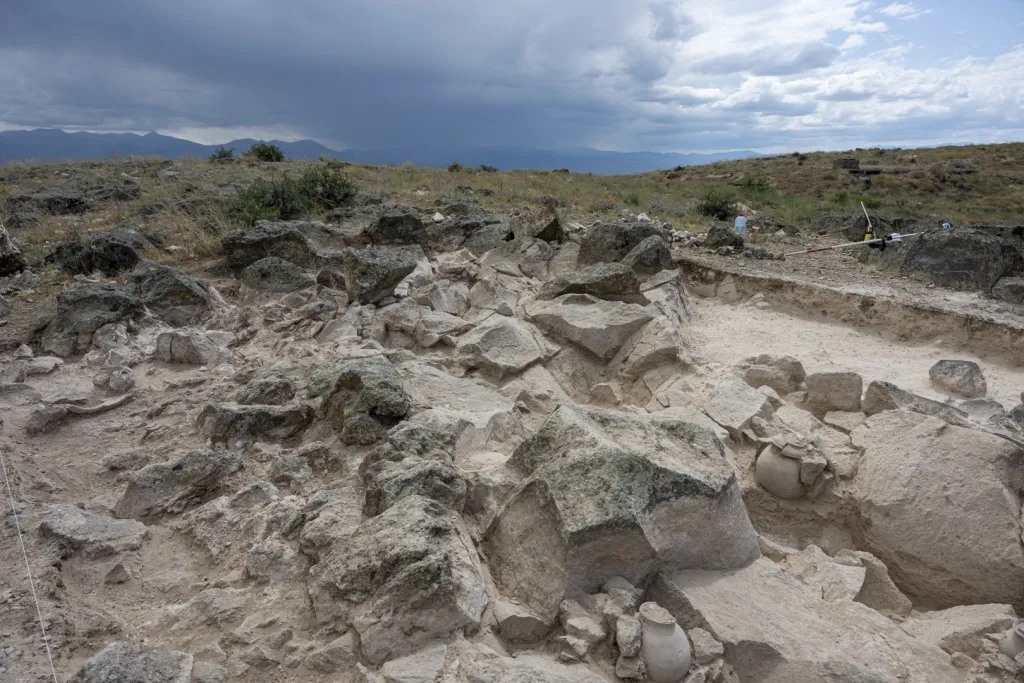 4/8View of the cemetery. (Credit: Adrian Chlebowski/PCMA UW)
4/8View of the cemetery. (Credit: Adrian Chlebowski/PCMA UW) -
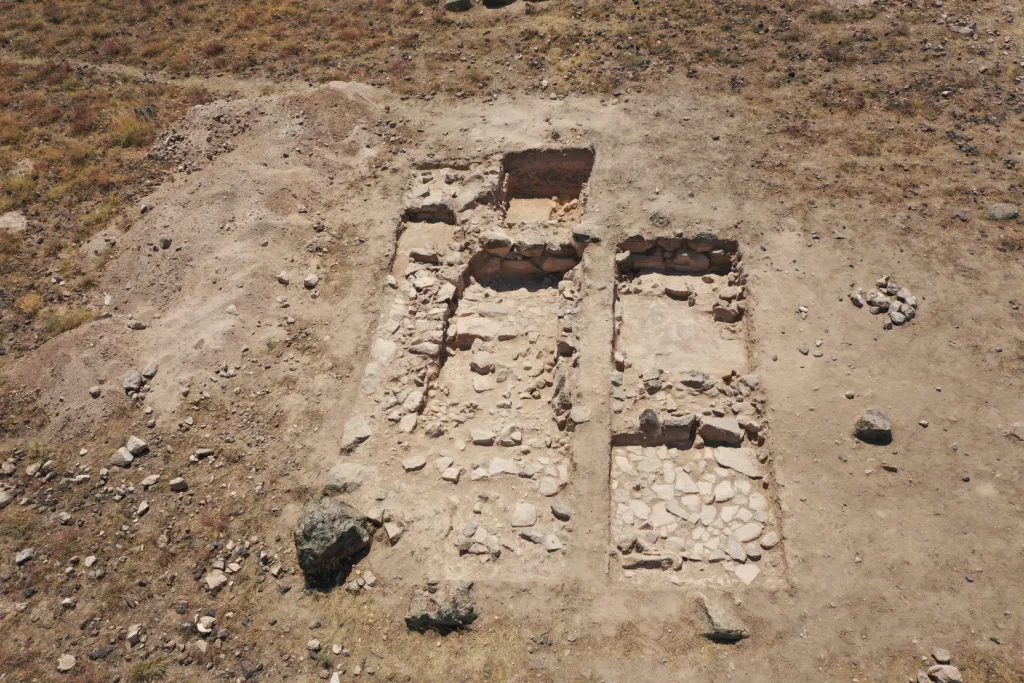 5/8One of the discovered Urartian houses. (Credit: Patryk Okrajek/PCMA UW)
5/8One of the discovered Urartian houses. (Credit: Patryk Okrajek/PCMA UW) -
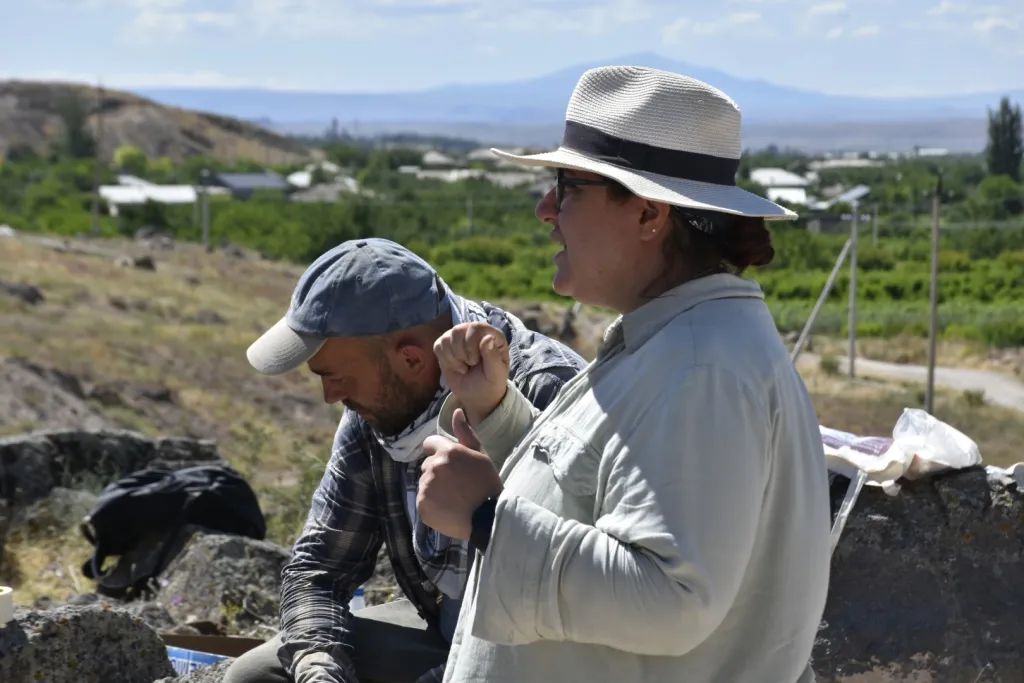 6/8Expedition leaders Hasmik Simonyan and Mateusz Iskra. (Credit: Tigran Zakyan)
6/8Expedition leaders Hasmik Simonyan and Mateusz Iskra. (Credit: Tigran Zakyan) -
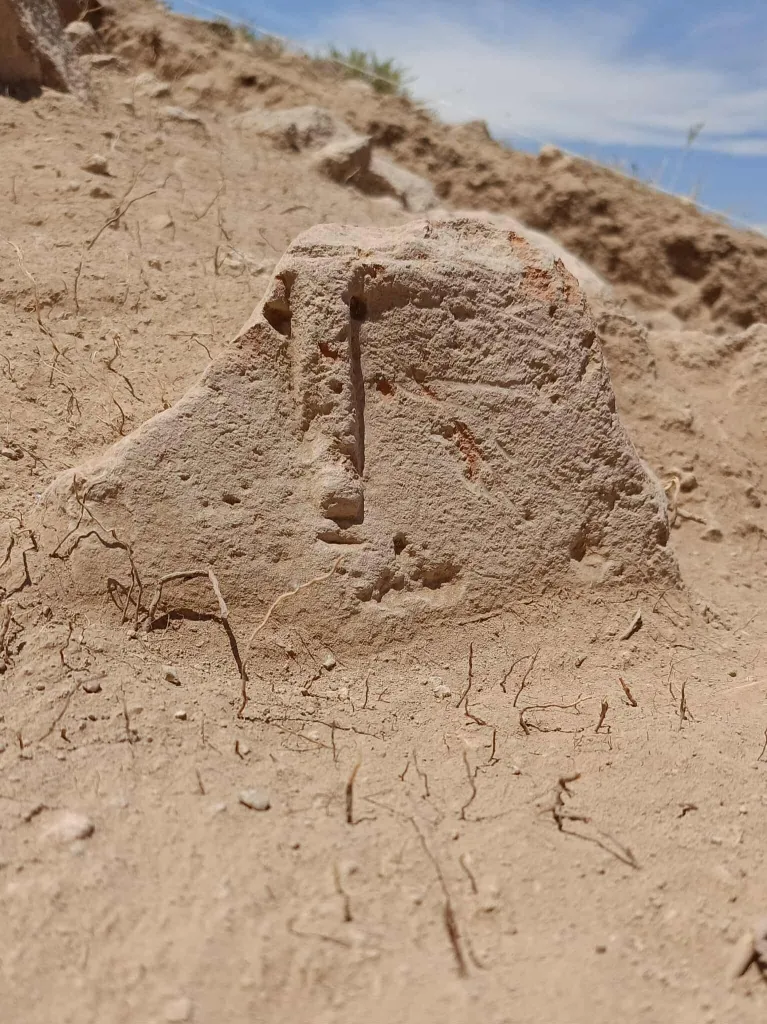 7/8Head of the idol before its full unveiling. (Credit: Michalina Andrzejewska/PCMA UW)
7/8Head of the idol before its full unveiling. (Credit: Michalina Andrzejewska/PCMA UW) -
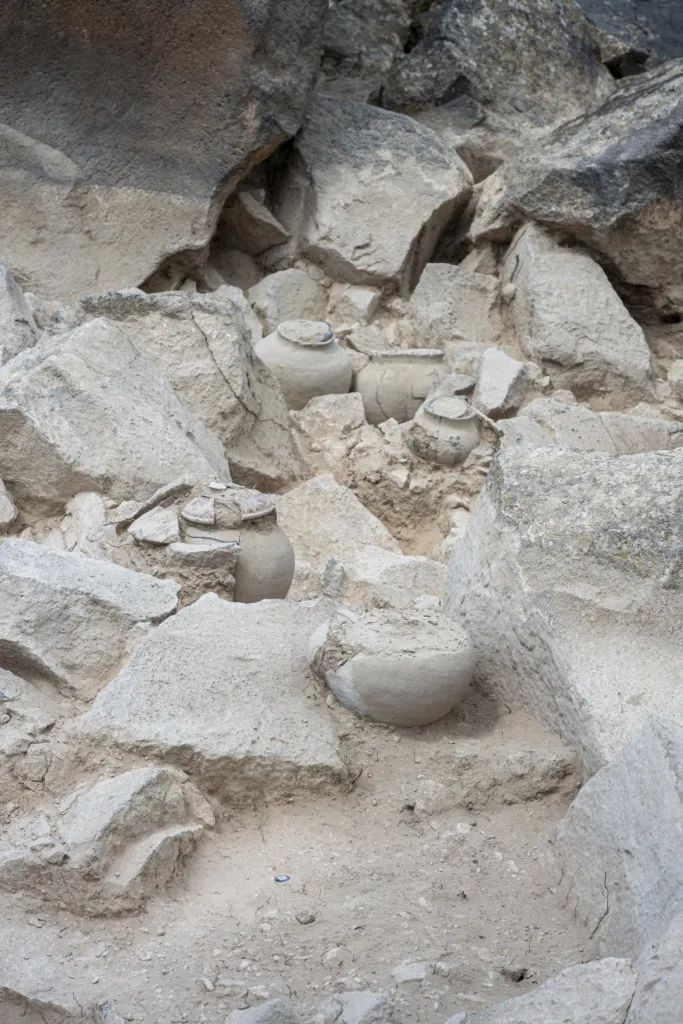 8/8Urn burials discovered during research in 2025. (Credit: Adrian Chlebowski/PCMA UW)
8/8Urn burials discovered during research in 2025. (Credit: Adrian Chlebowski/PCMA UW)













